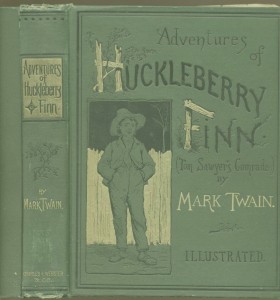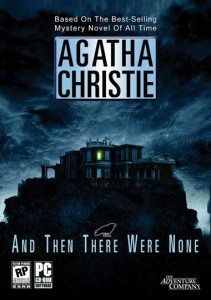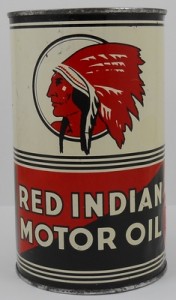by Ron Lawson
 Recently, I was given Mark Twain’s autobiography which was followed that same week by the news that a newly-released version of “The Adventures of Huckleberry Finn” will substitute the word “slave” for the original N-WORD. All of which lead me to an early recollection…and as is my nature…a debate.
Recently, I was given Mark Twain’s autobiography which was followed that same week by the news that a newly-released version of “The Adventures of Huckleberry Finn” will substitute the word “slave” for the original N-WORD. All of which lead me to an early recollection…and as is my nature…a debate.
I was raised in the Southwest within a reasonably good, religious, upstanding & moral family. A family that prided itself on its kindness, generosity and understanding. While not being a Leave it to Beaver home, it is what some would consider a fairly typical middle class American upbringing.
My grandparents had a large home with a library, my grandfather a physician who maintained an extensive collection of medical books going back to the Civil War, my grandmother being deeply religious with an extensive collection of innumerable gospels and related books.
I can remember being about 6 years old one day while skimming books in the library and finding a small, somewhat out of place little book wedged between an odd John & Peter or Syphilis book. It was an old children’s book (obviously far out of it’s element) so I picked it up. It was about a small boy named Sambo.
For those too young to recall the book, it finds a young Tamal boy who encounters four hungry tigers, and must surrender his bright new clothes, shoes, and his umbrella so the tigers will not eat him up. The tigers proceed to chase each other around a tree until they are all reduced to a mere pool of melted butter (okay, “War & Peace” it is not).
The book, published in 1899 by Helen Bannerman, was titled “Little Black Sambo”. The boy eventually recovers his clothes and his mother makes pancakes of the butter. The story was a children’s favorite for over half a century until the word Sambo was deemed a racial slur by many, the illustrations considered stereotypical, this after Langston Hughes criticized the book as depicting a “pickaninny” which was considered hurtful to black children, and gradually the book disappeared and was banned from lists of recommended stories for children. The book still on several banned books lists.
At the time I read the book “Little Black Sambo” I obviously had no comprehension of the controversial nature or collectibles that would latter be coined as Racial, Black Americana or Jim Crow Memorabilia. It did not bear on my mind or corrupt my soul, however it apparently embarrassed my grand parents who promptly snatched it away and hid the small cloth bound book.
 There had been other previously written racially related taboo books, yes…such as 1939’s Agatha Christie mystery novel originally titled “Ten Little N-WORD”. Okay…yes, (let’s get it over with) the dreaded “N-WORD”….you should by now however be very familiar with it’s commonly applied Politically Correct use.
There had been other previously written racially related taboo books, yes…such as 1939’s Agatha Christie mystery novel originally titled “Ten Little N-WORD”. Okay…yes, (let’s get it over with) the dreaded “N-WORD”….you should by now however be very familiar with it’s commonly applied Politically Correct use.
The title Ten Little N*****s was promptly changed because of the last word of the title obviously being a derogatory term for a black person, and in the United States by Dodd, Mead and Company in January 1940 was re-released under the title “And Then There Were None”. In the novel, ten people, who have previously been complicit in the deaths of others but have escaped notice or punishment, are tricked into coming onto an island. Even though the guests are the only people on the island, they are all mysteriously murdered one by one, in a manner paralleling, inexorably and sometimes grotesquely, the old nursery rhyme, “Ten Little Indians”.
It is Christie’s best-selling novel with 100 million sales to date, making it the world’s best-selling mystery ever, and one of the most-printed books of all time (Publications International lists it as 7th most-printed). It has since been adapted into several plays, films, and even a video game. Ref. Wikipedia®
In 1996, illustrator Fred Marcellino produced a re-illustrated version, The Story of Little Babaji, which changed the characters’ names but otherwise left the text unmodified. This version interestingly also became a best-seller.
Outside of books, numerous items such as slave collars, shackles, sale tags, sale/ownership documents, cast iron banks, cookie jars, advertising, photography and innumerable other items can and often do evoke a very powerful experience of the great extent to which such racist items permeated white society. Just about anything imaginable was mass produced, often embellished with a wide eyed black face having exaggerated features, or a catering overweight woman wearing a head scarf.
 Example: Many of us are familiar with the classic cast iron mechanical bank depicting the stereotypical black gentleman raising his hand to his mouth. The oft and ill titled “Jolly N-WORD” or the “N-WORD Hair Tobacco” tins or the many Aunt Jamima collectibles.
Example: Many of us are familiar with the classic cast iron mechanical bank depicting the stereotypical black gentleman raising his hand to his mouth. The oft and ill titled “Jolly N-WORD” or the “N-WORD Hair Tobacco” tins or the many Aunt Jamima collectibles.
That being said, most collectors of black Americana are in fact African-American. Most notably recognized celebrities such as Bill Cosby, Whoopi Goldberg and Oprah Winfrey, have all stated that they draw strength from such items because the antiques are symbolic of the struggles of their ancestors. It’s necessary to see that and to know we were once that kind of society.
So, that begs the question…if it is appropriate to not deny the history of an item (regardless of the obvious emotional affect), is it then not appropriate to use the correct title of that item? What is allowable and by whom?
Certainly, merely changing a title or calling an item by another name does not take away from what it is or that era’s use of such stereotypes. It is what it is…bit’s of our history and regardless of the amount of modifying it, can or should it ever be so easily disarmed and changed?
Who’s allowed to propagate or use these terms in regard to collectibles, when therefor is it acceptable or inappropriate? Do you or should you have to be of a certain demographic or race to use the correct title?
 Native Americans have equally & as long been negatively depicted and associated with such products & items of a derogatory nature. There oddly however is a hubris to the sensitivity, a lack of refrain. Such items as cigar store Indians, squaw items, mannequins and products with such names as “Red Indian Oil”, “Running Indian” “Savage Arms”, “Red Man Tobacco” many of these items are still freely marketed including those for more then one sports team.
Native Americans have equally & as long been negatively depicted and associated with such products & items of a derogatory nature. There oddly however is a hubris to the sensitivity, a lack of refrain. Such items as cigar store Indians, squaw items, mannequins and products with such names as “Red Indian Oil”, “Running Indian” “Savage Arms”, “Red Man Tobacco” many of these items are still freely marketed including those for more then one sports team.
WWII items…A French judge back in 2001 ordered Yahoo to block French users from seeing listings of Nazi merchandise on its auction pages and said he would fine the company 13,000 (£9,000) each day it failed to comply. (Associated Press May 2001)
Does that make an item less relevant, sought out or historically unimportant?
No. The divide between each of us regarding these relics can be dramatic and certainly emotionally heated. This article does not presume to give advice on appropriateness or lack thereof. I have profound compassion of those feelings which these items do evoke. There is however a certain blindness, an inequity and yes even ambiguity prevalent in our society. The suppression of an item does not mean it does not exist, no more then the myth of an ostrich burying it’s head in the sand will prevent it’s being attacked.
As with any collectible, racial and military items all have and impart something that recalls a moment in time, a place or even tragic events. It is our history, we as a people created it and regardless of how ugly some of that history may be, it cannot be denied or devoid of it.
Well stated…to censor history, is to attempt to delete it…which robs us of what we all need to learn…otherwise we are sure to repeat all the worst parts of it…